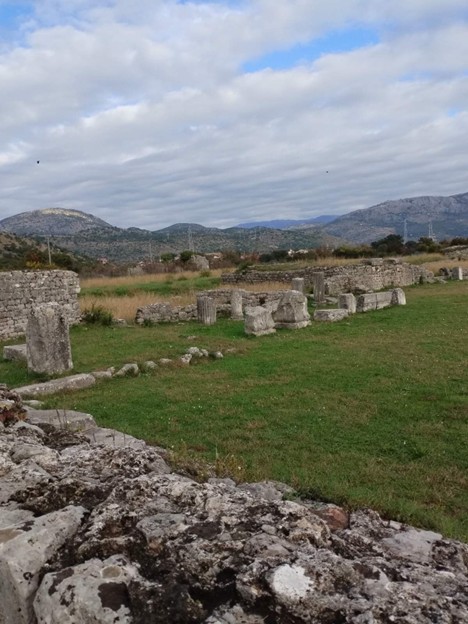Preserving Ancient Cultural Heritage in a New State: Montenegro and the Looting of Doclea, 1882

Our recent article on the plundering of the ancient site of Doclea in July 1882 provides an important case study in how new states preserved cultural heritage. The event occurred soon after Montenegro gained independence in 1878. A group of looters took advantage of the early stages of state formation and the state’s relatively weak supervision of cultural heritage by breaking into one of the most important tombs in Doclea. They stole valuable items from beneath one of the large stone slabs, intending to sell them in the Ottoman city of Shkodra. They also excavated artefacts from another location in ancient Doclea. Soon after, they were reported, and this is where the interesting story begins.
Residents of a nearby village alerted the local authorities in Podgorica to the looting of the country’s most significant ancient site. The local authorities and the Ministry of Internal Affairs endeavored to prevent the theft of archaeological objects and their sale beyond the country’s borders. The state made strenuous efforts to recover the stolen artefacts, with partial success. The fate of the remaining stolen objects is unknown, and as no further information about the case can be found in official state documents, it is highly likely that they were not retrieved. The case was subsequently closed.
Nevertheless our archival research reveals a number of important findings about the changing nature of the preservation of ancient cultural heritage in the late nineteenth century. Documents reveal that the previous Ottoman administration, who ruled the area until 1878, had provided some protection of the site. The Ottoman authorities had appointed a local resident to oversee Doclea. After the theft was reported in 1882, the local Montenegrin authorities took action and then the central government’s Ministry of Internal Affairs adopted a firm stance to prevent the sale of stolen ancient artifacts beyond the country’s borders.
Official documents reveal that the Montenegrin government was determined to secure the artefacts’ return to the state, considering it a necessary measure for their protection and preservation as well as raising the idea of a establishing a national museum to house and exhibit the returned artefacts. The Minister of Internal Affairs then contacted the Ottoman authorities in the city of Shkodra to locate the thieves who had taken the artefacts there and to hand them over to Montenegrin authorities. They even went so far as to offer state funds to secure the return of the artefacts. This was, in fact, an early example of interstate cooperation in the protection of ancient heritage – a surprising development, perhaps, given the conditions in the Balkans at that time.
This example is of particular significance as it represents a pioneering effort in the domestic protection and international preservation of ancient artefacts in Montenegro. The Montenegrin state’s actions was in line with broader European trends related in terms of the development and implementation of heritage protection. The case very likely contributed to the state’s commitment to improving the protection of the ancient site of Doclea and to conducting further research on it, which was organised for the first time several years after the incident. These measures contributed to future legislation, aligning the protection of Montenegro’s heritage with international trends at the dawn of the twentieth century. These heritage protection efforts also accelerated the development and establishment of museums for cultural heritage in Montenegro.
Towards the end of the nineteenth century, the protection of cultural heritage became increasingly important across European countries such as Great Britain, France, and Germany, driven by the forces of nation-building and economic development. Our case study shows that in Montenegro, the effort to preserve cultural heritage was closely tied to the process of forging a national identity. After gaining independence, both institutions and individuals showed a growing interest in Montenegrin heritage, which was now seen as uniquely Montenegrin and no longer regarded as belonging to or controlled by any foreign power.
Finally, the text resulting from our research holds value beyond the academic sphere. It demonstrates that the entire society can learn meaningful insights from historical. Unfortunately, Montenegro cannot yet boast of having been fully responsible towards its ancient cultural heritage – both in terms of archaeological sites and artefacts preserved in museums. Hundreds of artefacts disappeared without a trace from Montenegrin museums during the twentieth century, and regrettably also within the first two decades of the twenty-first century. Let this example serve as a lesson from the past and a reminder that Montenegro once took pioneering steps in the protection of its ancient heritage, so that this fact may stand as both a warning and a guide for the future.

